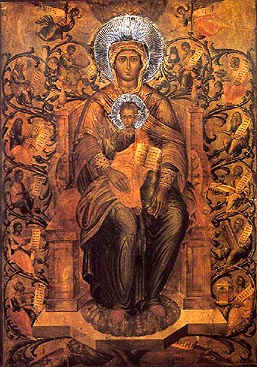


|
The Slavs, like the Celtic and Germanic tribes, began moving out of the steppes of central Asia in the millennia before Christ and by 800 AD they were found in eastern Europe east of the Vistula River and the Carpathian Mountains. Several centuries later they were moving through central and eastern Europe in migrations driven hither and yon by the Germanic and other tribes competing for space. The great ferment of peoples in central Asia which sent the Indo-European tribes westward and southward in quest of new lands remains an enigma not understood even today. Although the Slavs, like the Celtic and Germanic tribes, belong to the great Indo-European ethnic and linguistic group of peoples, they had evolved sufficiently different to be noticed by early Greek and Roman writers who described them as possessing far greater uniformity in ethnicity than they possess today. According to the writers the Slavs were of moderate stature and possessed blue eyes, blond hair and broad faces with prominent cheek bones, characteristics which can only be found today in more remote regions of Slavdom such as eastern Poland, Belorussia, western Russia and parts of Ukraine. 
By the 10th century the Slavs began to diverge linguistically and geographically into three groups, namely 1) the Eastern Slavs including the Russians, Belorussians, Ukrainians, Bulgarians and Ruthenians; 2) the Western Slavs including the Poles, the Czechs and Slovaks, and a small minority of Sorbs or Wends completely surrounded by Germans in Eastern Germany; and 3) the Southern Slavs including the Slovens, Croats, Serbs, and Macedonians. The greater portion of the Slavs, principally the Russians, Belorussians and Ukrainians as well as Bulgarians, Serbs and Macedonians profess Orthodox Christianity, adhering to the liturgical, theological and other religious traditions of the Church of Constantinople, while a minority of Slavs found in western Ukraine, western Belorussia and the Carpathian Mountains are Greek Catholics, i.e. almost identical to the Orthodox Slavs with the major exception that the Greek Catholic autonomous churches are in union with the Church of Rome. Most of the remaining Slavs are Roman Catholics. Other Slavic minorities are a small number of Protestants stemming from the Protestant Reformation and Muslims converted by force to Islam during 500 years of Turkish/Muslim occupation and oppression in southeastern Europe. The ancient Slavs lived in endogamous clans in small villages scattered throughout Slavic regions dependent on agriculture supplemented by live stock and by the domestic industries of metalwork and weaving. The absence of cities and the holding of land in common resulted in a very conservative society without class structures. Large families and the general inefficiency of agriculture prompted the clearing of virgin land as well as migration into regions where the resistence of the inhabitants could be overcome. Reflected in the life style and social structure of the Slavs was their pantheistic or naturalistic religion predicated on a plethora of gods and spirits, good and evil, whose appeasement through rites and celebrations dominated community life. In this respect the ancient Slavs differed little from other Indo-European peoples in Europe and elsewhere. Conflicts and warfare with other peoples led eventually to the emergence of a warrior class whose chiefs evolved into the princes who came to rule the society. The warrior class and the emergence of principalities became the most important feature of Slavic society in the Middle Ages. Therewith began the growth of cities and class distinctions. The Slavic or Slavonic languages belong to the Indo-European group of languages which extends throughout Europe eastward into eastern Asia and northern India. Evolving from a proto-Slavonic language common to all, the language of the Slavs diverged into three main groups corresponding to the geographic deliniations described earlier. Though now different from one another, the various languages remain, nevertheless, closer to each other than, for example, the Germanic or Romance languages. Thus Slavs of different nations can communicate with one another although often with difficulty. In the 9th century the language of the Thracian Slavs became the Old or Church Slavonic under the influence of the Apostles of the Slavs, Sts. Cyril and Methodius, who translated the service books and religious literature of the Greeks into that language. Church Slavonic became the liturgical language of Slavs who converted to Eastern Christianity and influenced the common tongue of all Slavs who adhered to the Church of Constantinople after the Great Schism in the 11th century, whereas the Slavs in union with the Roman Church used Latin liturgically and their own dialects otherwise. The division of the Slavs into Orthodox and Catholic is further reflected in the use of the Cyrillic alphabet by the Orthodox and by most Slavic Greek Catholics. Like all of the Indo-European languages, at least originally, the Slavic languages are highly inflected and remain least effected by the changes impacting the languages of the West. As the ancient Greeks and Romans, they prefer to express differences in number, case, tenses and grammatical relationships through inflections of the words themselves - quite unlike the hybrid language of English which has lost virtually all the inflections which it once possessed as Anglo-Saxon. Today the Slavs are the largest Indo-European group of peoples, numbering about 250 million people, and extend from central Europe eastward to the Pacific coast of Asia and southward into southeastern Europe.
RESURRECTION KONTAKION Although
You descended into the grave, O Immortal One,
Return
to Index. |